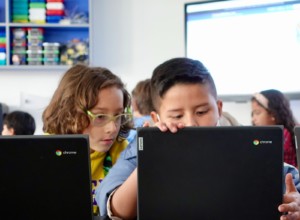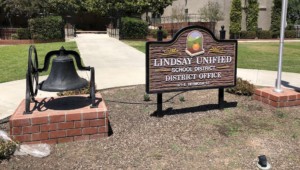Mass Customization for Student Success
Roberta Selleck, Superintendent Adam’s County School District 50, Colorado talks about her vision of personalized learning ahead of Innovate to Educate: A Symposium on [Re]Design for Personalized Learning, August 4-6, 2010 / Harvard Club / Boston, Massachusetts
Brought to you by the Software & Information Industry Association (SIIA) in collaboration with ASCD & Council of Chief State School Officers (CCSSO)
What is the vision for personalized learning?
We are the largest school district in the lower 48 states. Time is the variable in our work here. We are the only school district in the lower forty eight that has taken on standards based education. As a result of what we are doing, we are assisting the state of Maine, which is proclaiming their model be in place by 2014.
We just finished our first year using non-graded time as a variable this year, in other words, grade levels went away as we know it. They are based in their instructional level, not their frustration level. That’s a huge paradigm shift.
The words we are using are mass customization. We recognize that every child is unique, so we must look at every child as a unique individual. Where are they on that continuum so that we can help them continue that academic unique journey?
What are the challenges being addressed and the opportunities
being leveraged?
3. What does it look like in terms of: (1) the system design; and
(2) the instruction, curriculum assessment and technology?
We decided not to just nibble around the edges. We call it a standards-based system, with an emphasis on system. If all of the systems don’t change, you are going to stagnate or frustrate the people who are going to manage that system. We found a technological platform, a small company out of Ohio, called Three Shapes, and they have customized an electronic grade book that captures information, like an e-portfolio, for every child, and it’s not timebound.
This one continues with the child. There is nothing magic about nine months and most gradebooks lock after this long, making them not very useful when time is a variable for students.
We have tried to make the shift from a teacher-led, to a student-centric learning system. Kids know exactly what they are going to be held accountable to learn, and teachers know exactly what they are going to be held accountable to teach. And parents have an entry into that world with the electronic gradebook. Each child has their own three-ring binder and if we are talking about literacy, if they are at level 2, they have a graph that discreetly lists the targets. In this system, the child must offer at least three pieces of artifacts to demonstrate their proficiency level. It can be anything they choose to create.
Once they have those artifacts, the teachers verify in a variety of ways. It can be a pencil and paper test, observation, conversation, or project-based learning that they have created with the guidance of the staff and teachers. Once that is validated, at least from the teacher’s perspective, then our system brings to bear measures to keep us at inter-related reliability.
We use Scantron Achievement series and performance series testing. They take a computerized assessment of those learning targets, and depending on the learning target it can be a quiz of ten to twenty questions. If the students jump that threshold, if it validates the child’s learning, then the student is able to fill in the bar graph and they keep moving forward. They get to move to the next level, whenever that may be, because, again, time is the variable.
We are going to gudie other people along this pathway. You never learn something till you can teach it to someone else.
Where does personalization intersect with equity?
We certainly believe that what happens in our traditional system is a travesty. The kdis are put on a conveyor belt, and nine months later they are popped out and for the most part if they are almost ready to go to the next level, they go, regardless. That for us is not equity. We have broken that model and tried to look at each child as an indidvidual.
It’s not the teacher just talking about her 25 kids in the class. All teachers are owning all kids’ education and graduation goals, even at the elementary level. We all have a piece of the game.
I wish people could come and really see this in action. Once a month, we host these tours and we have 25 and 30 people, come, we put it in context. We put it in the classroom. These kids can clearly articulate what their goals are, and where they are at, academically. What it is they are working on, and they can tell you what they know, and they can tell you what they don’t know. It’s really remarkable to see. Kids are not shy about sharing that with others.
We have student panels, and they field questions. They will use a capacity matrix. That’s a tool that provides goal setting and self reflection of the student’s work,and they know how to work it.
Professional Development: What are implications for teachers and
education administrators – their differentiated roles, knowledge and
skills?
We have to go back two years to start. Two years ago, it was common practice to have three to five professional development days. When we did this two years ago, we looked in and we saw we can only afford nine.
We have moved more to targeted and real time professional development. That means that we may have two or three teachers – primarily one or two – they go to the principal and say they are having difficulty entering data, so they are requesting PD. As a district, we deploy guest teachers to that building to allow those teachers to come off the floor, to receive real time and customized training.
During the other nine days – we put together a menu of other options so that if there is a large body of teachers that need more help for it, they obtain it.
How can educators, researchers and software developers
collaborate to create effective personalized learning solutions?
They need to be problem solvers. We have talked to some folks [vendors] who have basically said, “Here is our product list and you comply to them,” and that is not going to work with us.
We would love an application where the teacher can walk around and enter data. I saw this in the Apple store, and it’s all done personalized and instantaneously, and that’s where we made the jump to the teacher needs a device like that. We would love people to come in and create that. Use this with and and develop with us, and then you can go and sell that to other people.





0 Comments
Leave a Comment
Your email address will not be published. All fields are required.